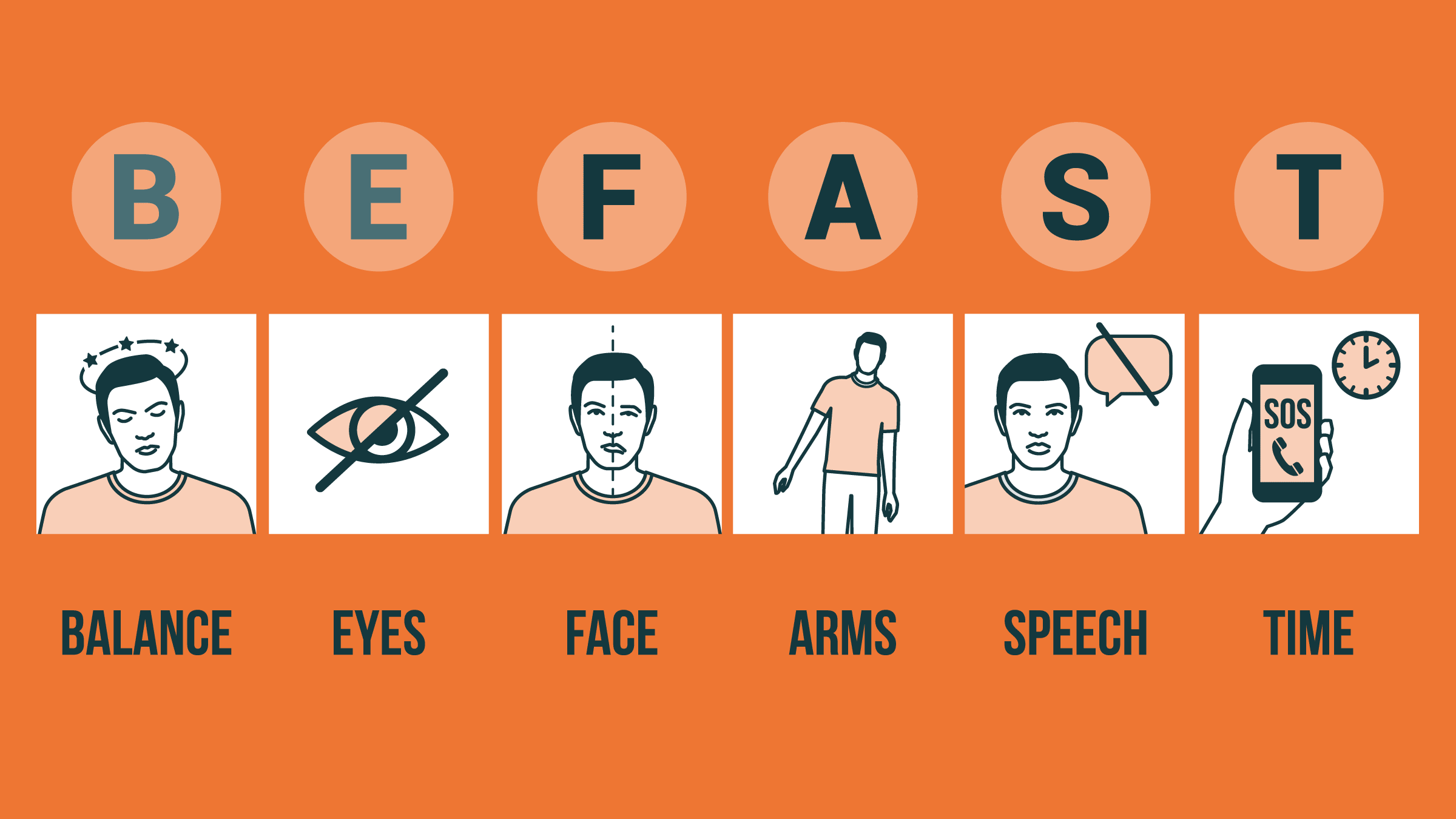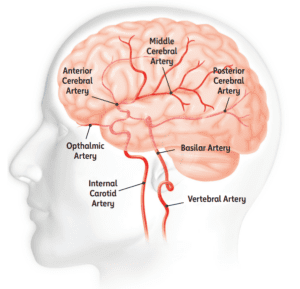Dr Kumar Kenchappa writes about lifestyle-related risk factors and ways to prevent stroke, especially if you have hypertension and/or diabetes.

BEFAST is the commonly used stroke acronym to help the public easily remember the signs of a stroke. (Ohio State Health)
There are multiple major risk factors for stroke. Some are non-modifiable, such as age, sex, and ethnicity, whereas others, including lifestyle factors, are potentially modifiable. The major independent modifiable risk factors for stroke are hypertension and diabetes.
When both diabetes and hypertension are present together, it increases the risk drastically.
High blood pressure doubles or even quadruples the risk of stroke if it is not controlled. Keeping a close watch on blood pressure and promptly addressing any elevation is likely the most impactful measure individuals can take to prevent strokes.

Various arteries to the brain, which supply blood to specific areas of the brain. (American Stroke Association)
Small improvements in BP (10 mm Hg systolic and 5 mm Hg diastolic) are associated with a 41 percent reduction in stroke, seemingly small interventions can achieve significant population-wide positive impacts.
Having diabetes constitutes a distinct and separate risk factor for the occurrence of strokes. Compared with nondiabetic patients, diabetic patients have at least twice the risk for stroke and approximately 20 percent of diabetic patients will die from stroke, making it one of the leading causes of death in this population.
Diabetes duration has also been shown to increase the risk of stroke, with every year of diabetes duration increasing the risk by 3 percent.
The likelihood of experiencing a stroke is notably higher during the winter season, particularly when there is a sudden and substantial drop in temperature. The reason is a cold-induced increase in blood pressure and hypercoagulation — blood tends to thicken and become stickier during extreme cold.
Looking at the above facts, it is clear that regular monitoring of BP and sugar levels will help in the prevention of stroke, especially more so during the winter season.
Obesity, along with associated complications like high blood pressure and diabetes, increases the likelihood of experiencing a stroke. Shedding even a modest amount of weight, such as 5 kg, can significantly reduce your risk.
Your goal: While aiming for an ideal body mass index (BMI) of 25 or less is beneficial, it’s essential to collaborate with your doctor to develop a personalised weight loss plan. Craft a weight loss strategy that aligns with your health objectives and individual needs.
How to achieve it:
Physical activity not only aids in weight loss and the reduction of blood pressure but also functions independently as a significant factor in lowering the risk of strokes.
Your goal: Engage in moderate-intensity exercise for a minimum of five days per week.
How to achieve it:
Having approximately one drink per day is considered within a reasonable limit. However, exceeding two drinks per day significantly increases the associated health risks.
Your goal: Abstain from alcohol consumption or if you choose to drink, do so in moderation.
How to achieve it:
Atrial fibrillation, characterised by irregular heartbeats, leads to the formation of clots in the heart, posing the risk of strokes as these clots can migrate to the brain. Atrial fibrillation significantly elevates the risk of strokes, nearly fivefold, emphasising the need for serious attention. If you are diagnosed with atrial fibrillation, it is crucial to pursue appropriate treatment.
Your goal: Seek treatment if you are diagnosed with atrial fibrillation.
How to achieve it:
Elevated blood sugar levels cause gradual damage to blood vessels, increasing the likelihood of clot formation within them.
Your goal: It is essential to manage and maintain control of your blood sugar to mitigate these risks.
How to achieve it:
Smoking expedites the formation of clots through dual mechanisms—it thickens the blood and promotes the accumulation of plaque in the arteries. Quitting smoking, alongside adopting a healthy diet and engaging in regular exercise, stands as one of the most impactful lifestyle changes to significantly decrease the risk of stroke.
Your goal: Quit smoking.
How to achieve it:
(The author Dr Kumar Kenchappa is a Consultant – Interventional Cardiologist with Manipal Hospital in Hebbal, Bengaluru.)

May 03, 2024

May 03, 2024

May 01, 2024

May 01, 2024

Apr 30, 2024

Apr 30, 2024